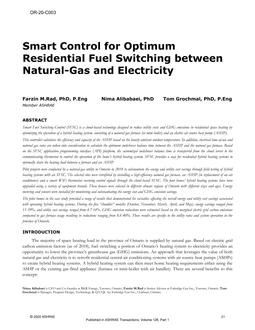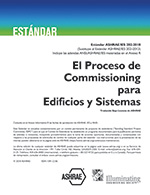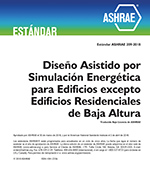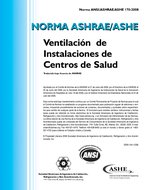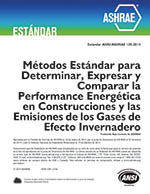Description
Smart Fuel Switching Control (SFSC) is a cloud-based technology designed to reduce utility costs and GHG emissions in residential space heating by optimizing the operation of a hybrid heating system, consisting of a natural-gas furnace (or mini boiler) and an electric air source heat pump (ASHP).
This controller calculates the efficiency and capacity of the ASHP based on the hourly ambient outdoor temperature. In addition, electrical time-of-use and natural gas rates are taken into consideration to calculate the optimum switchover balance time between the ASHP and the natural gas furnace. Based on the SFSC application programming interface (API) platform, the customized switchover balance time is transferred from the cloud server to the communicating thermostat to control the operation of the home’s hybrid heating system. SFSC provides a way for residential hybrid heating systems to optimally share the heating load between a furnace and an ASHP.
Pilot projects were conducted by a natural-gas utility in Ontario in 2018 to substantiate the energy and utility cost savings through field testing of hybrid heating systems with an SFSC. The selected sites were retrofitted by installing a high-efficiency natural gas furnace, an ASHP (in replacement of an air conditioner) and a smart WiFi thermostat receiving control signals through the cloud-based SFSC. The four homes’ hybrid heating systems have been upgraded using a variety of equipment brands. These houses were selected in different climate regions of Ontario with different sizes and ages. Energy metering and sensors were installed for monitoring and substantiating the energy cost and GHG emission savings.
The pilot homes in the case study provided a range of results that demonstrated the variables affecting the overall energy and utility cost savings associated with operating hybrid heating systems. During the five “shoulder” months (October, November, March, April, and May), energy savings ranged from 11-39%, and utility cost savings ranged from 4.7-14%. GHG emission reductions were estimated based on the marginal electric grid carbon emissions compared to gas furnace usage resulting in reductions ranging from 8.6-40%. These results are specific to the utility rates and system operation in theprovince of Ontario.
Citation: 2020 Winter Conference, Orlando, FL Conference Papers
Product Details
- Published:
- 2020
- Number of Pages:
- 8
- Units of Measure:
- Dual
- File Size:
- 1 file , 2.6 MB
- Product Code(s):
- D-OR-20-C003
